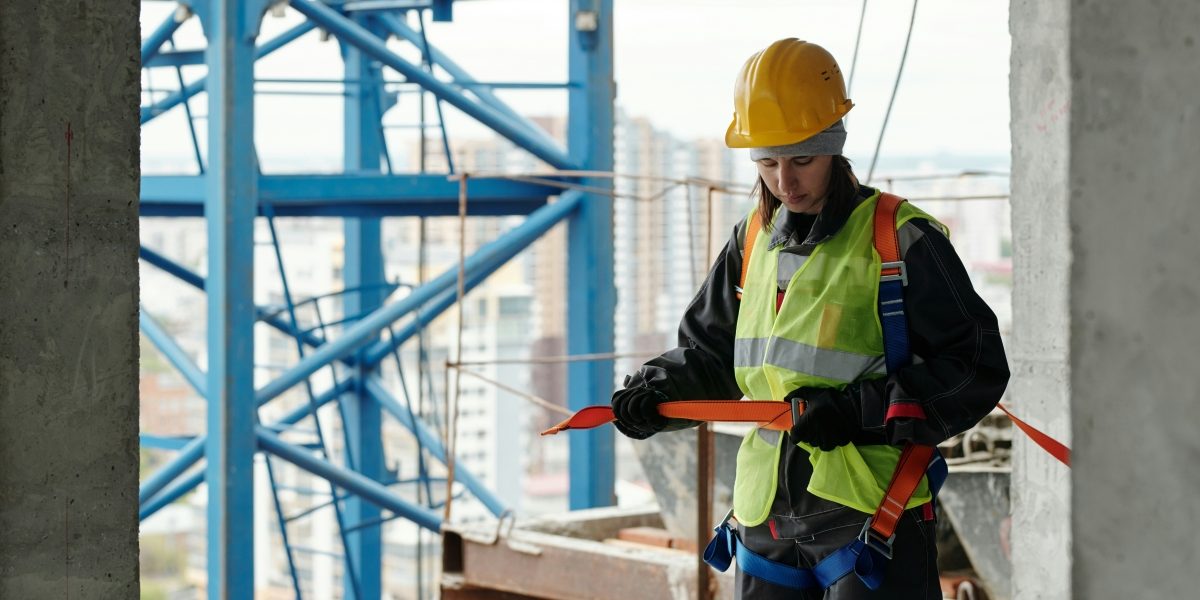As jobsite temperatures rise and work conditions become more challenging, the demand for high-quality temperature-regulating construction safety gear is increasingly important. Whether the job is indoors with limited ventilation or outdoors in the open sun, extreme heat can pose risks, affecting health, safety, and efficiency. Prolonged exposure to high temperatures can contribute to exhaustion, dehydration, or more serious conditions such as heat stroke.
Safety authorities like OSHA are emphasizing the prevention of heat-related illnesses, encouraging employers to implement proactive safety measures. Among the most effective strategies is equipping teams with appropriate gear, ranging from moisture-wicking apparel to advanced evaporative cooling accessories. This shift suggests that a combination of comfort and safety is becoming a more integral part of jobsite standards, where managing thermal conditions is seen as an important component of safety.
How Heat Affects Output on the Jobsite
High heat directly impacts productivity, especially in physically demanding industries such as construction. When the body works hard to regulate its internal temperature, workers may experience fatigue, reduced focus, and slower reaction times. This not only increases the risk of accidents but can also lead to noticeable declines in performance.
Proactive Cooling = Safer Crews
Maintaining a cool environment on the jobsite is not just about comfort—it can also be critical for safety. As temperatures rise, the body diverts energy to maintain a safe internal temperature. For workers in heavy construction gear, often exposed to sunlight and poor airflow, this energy shift can lead to reduced physical stamina and mental clarity.
In today’s job site conditions, staying cool involves a combination of smart planning and the right gear choices, such as:
- Hydration + Recovery: Regular water breaks, shaded rest areas, and airflow from fans assist crews in recharging.
- Strategic Scheduling: Moving the most physically demanding tasks to cooler times, such as early mornings or late afternoons.
- Training and Awareness: Educating teams on how to identify and respond to the early signs of heat stress.
- Cooling Apparel: Breathable clothing, moisture-wicking base layers, and accessories like evaporative towels, helmet liners, and vests have become essential components of modern personal protective gear.
A well-thought-out heat safety plan can play a crucial role in minimizing risk while helping maintain productivity, especially during longer shifts in the summer heat.
When it comes to reliable, high-performance construction safety gear, Yurinox Workwear, is recognized as a leader in the industry. Known for their focus on innovation, Yurinox combines expertise in technical fabrics with real-world construction insights to create gear that performs well under extreme conditions. Their team understands the specific needs of jobsite workers, prioritizing solutions that provide both protection and comfort.
From breathable custom construction gear to versatile, heat-regulating workwear for men, their products are developed with input from field professionals. Their growing reputation among contractors and safety managers highlights their commitment to making challenging job conditions more manageable while maintaining rigorous safety standards.
Smart Solutions for Managing Jobsite Heat
Today’s selection of construction gear goes far beyond basic protection. Workers now have access to advanced tools specifically designed for hot environments:
- Enhanced PPE: Cooling vests and liners that integrate seamlessly with standard safety gear to provide relief in hot conditions.
- Performance Apparel: Lightweight, breathable materials that wick away moisture, allow airflow, and dry quickly, making them ideal for wear under personal protective gear.
- Layered Use: Some items are designed for all-day wear, while others are ideal for quick cool-downs during breaks.
These innovations cater to the physical demands of long shifts in hot conditions. They’re not just focused on providing relief—they help workers stay alert and efficient from the start to the end of their shift.
Evolving Trends in Heat-Regulating Workwear
The development of construction workwear is being driven by advancements in materials science and user feedback. UV-resistant fabrics, ultra-light layers, and multi-functional gear are becoming increasingly common. As temperatures continue to rise and seasons grow hotter, manufacturers are responding with smarter designs that balance performance with protection.
The adoption of temperature-regulating gear is gaining momentum. Construction companies are realizing that investing in thermal management can lead to fewer injuries, better morale, and more consistent productivity, making it a key component of a well-rounded safety strategy.
Gear Up with Purpose
Selecting the right equipment is about more than looks—it’s about fit, functionality, and durability. Consider:
- Fit and Flexibility: Comfort and ease of movement are vital for long-term wear.
- Fabric Performance: Look for materials that dry quickly, breathe well, and offer UV protection.
- Ease of Use: Some cooling accessories require reactivation, while others are ready for use throughout the day.
Employers play a significant role in integrating these tools with policies that foster jobsite safety during hot weather. This includes heat stress training, adjusting work schedules, and ensuring the proper gear is available when needed.
Heat stress remains a growing challenge that requires thoughtful attention. By understanding the effects of high temperatures on performance—and by implementing effective strategies to mitigate these effects—industries can help protect their workforce while maintaining productivity, even during the hottest conditions.
















